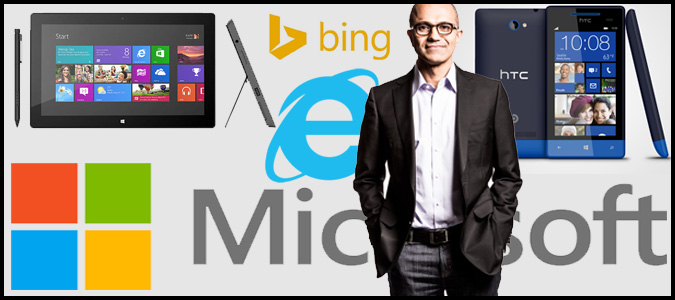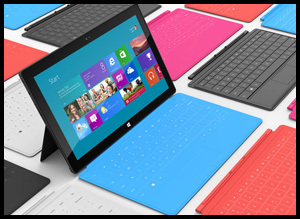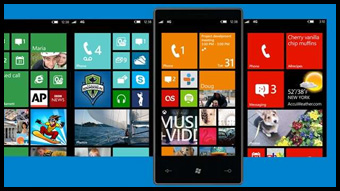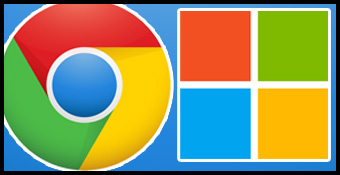6 Things Microsoft's New CEO Must Do to Save Windows

It's official. Microsoft has named longtime executive Satya Nadella its next CEO. The former VP of Microsoft Cloud and Enterprise takes over a company facing greater challenges than at any point in his 22-year tenure. The company's Windows operating system is still the leading desktop platform, but the latest version , Windows 8/8.1, has alienated a lot of users with its touch-centric Modern UI. At the same time, PC sales are falling and Android and iOS continue to dominate the phone and tablet space. Windows Phone has grown a bit but remains miles behind Google's and Apple's mobile operating systems. Here are six things Nadella should do to save the various flavors of Windows.
1. Admit Windows 8 Is the New Vista
Just like Vista before it, Windows 8 is going over like a lead balloon — not only with consumers but also with corporate IT managers who don't want to retrain their employees in an OS that's not as keyboard- and mouse-friendly. As many of those businesses finally upgrade from Windows XP, they'll be going with Windows 7, not Windows 8 or 8.1. Because of his experience running the Enterprise group, Nadella knows how important it is to please these very conservative clients.
We can already see Microsoft backtracking by making boot-to-desktop the default and adding window controls to Modern UI apps in a new, leaked update to Windows 8.1. We've heard rumors that Windows 9 will do a complete about-face, bringing back the Start menu and allowing users to run Modern apps on the desktop. Nadella must fast-track Windows 9 and assure corporate clients that something more productivity-focused is coming.
MORE: Windows 9 Rumors: New Start Menu, Apps on Desktop, More
2. Kill Windows RT

Technology companies usually win when they put the user first. Unfortunately, Windows RT, the hobbled version of Windows that runs only on ARM-powered devices, is a political operating system that tries to please everyone but the user, and ends up serving no one.
For decades, Windows ran only on computers with x86 processors, which are manufactured mainly by Intel and AMD. With ARM processor manufacturers like Qualcomm and Nvidia becoming important players in the last few years, Microsoft wanted Windows to support ARM CPUs but didn't want to offend its old buddy Intel. Enter Windows RT, which looks and feels like regular Windows but can't run the millions of desktop apps people want and expect.
With Windows RT, ARM vendors get to work with Microsoft, Intel gets to maintain its lead over those vendors by running the "real" Windows and consumers get a confusing, limited experience. Nadella needs to kill RT and either stop ARM support entirely or build it into regular Windows. Through emulation, it is possible for an ARM processor to run many x86 apps, as anyone who has jailbroken a Microsoft Surface RT tablet can tell you. The new CEO should put this pitiful platform in its proper place, right next to Microsoft Bob in the company archives.
Stay in the know with Laptop Mag
Get our in-depth reviews, helpful tips, great deals, and the biggest news stories delivered to your inbox.
3. Get Office, Windows Teams to Work Together
It has been a year and a half since Windows 8 launched, but we still don't have a touch-centric version of Office available. Is Microsoft so siloed that the team that makes its industry-leading productivity suite wasn't prepared to support its new operating system at launch? This is the same company that, not too long ago, had two different teams developing two different mobile platforms (KIN and Windows Phone) at the same time. Nadella must get the teams to work together so the products keep pace with each other.
MORE: 5 Microsoft Excel 2013 Tips and Tricks You Need to Know
4. Make Windows Phone More Flexible

Despite all the effort Microsoft has put into marketing and developing its mobile platform, Windows Phone is a distant third behind Android and iOS, controlling just about 3.7 percent of the worldwide smartphone market in Q3, and 4.7 percent of the U.S. market more recently. After buying Nokia, the company has more ability to control the hardware but has given its partners a big reason not to produce their own Windows Phones.
The biggest problem with Windows Phone is how little choice it offers users. Whereas Android users can install third-party keyboards, tweak hundreds of settings or even change their application launchers, Windows Phone owners have relatively little control over their own devices. Those few Windows Phone partners that remain are not able to make any meaningful tweaks to the UI or preloaded apps, something that helps them stand out when selling Android phones.
While providing a fully catered, locked-down experience has worked for Apple, it's not going to work for Microsoft, a company that succeeds when it works with partners and customers to provide infinite flexibility. Windows became the leading desktop OS because it provides so much flexibility, something that Android is doing on mobile today. Nadella should look to emulate the rich, diverse ecosystem of Android devices, apps and services rather than Apple's walled garden.
5. Provide a Single API for Windows and Windows Phone
Unlike Apple, which distinguishes its computer and mobile experiences, Microsoft believes that users benefit from having the same UI on every device. Unfortunately, in reality, Microsoft has three very different versions of Windows: Windows 8.1, Windows RT and Windows Phone.
Microsoft keeps promising a single experience, but Windows Phone and Windows 8 still use different APIs, which prevent developers from writing one application that scales across both platforms. For example, Windows Phone apps can read the battery percentage, but Windows 8 apps don't have access to that information. The company must provide a single Windows API right away if it really wants to focus on "developers, developers, developers."
MORE: 8.1 Worst Windows 8.1 Annoyances And How to Fix Them
6. Get Google to Support Your Platforms

The Windows and Windows Phone stores are missing a lot of popular apps, but the most glaring snubs come from Google. While iPhone users enjoy dedicated Google Maps, Gmail and YouTube apps and Android users enjoy all of these plus Chrome browser, Google voice search and Google Play, Microsoft users are largely left out in the cold.
Nadella should reach out to Google and try to convince it to offer apps for Windows and Windows Phone. While Microsoft would like everyone in the world to use its browser, its email service, its Bing search engine and its music service, many people use Google's services even though they prefer the look and feel of Windows. Google has refused to wade in the Windows 8/ Windows Phone pool so far, but with the right outreach, it could probably be convinced to do so.

